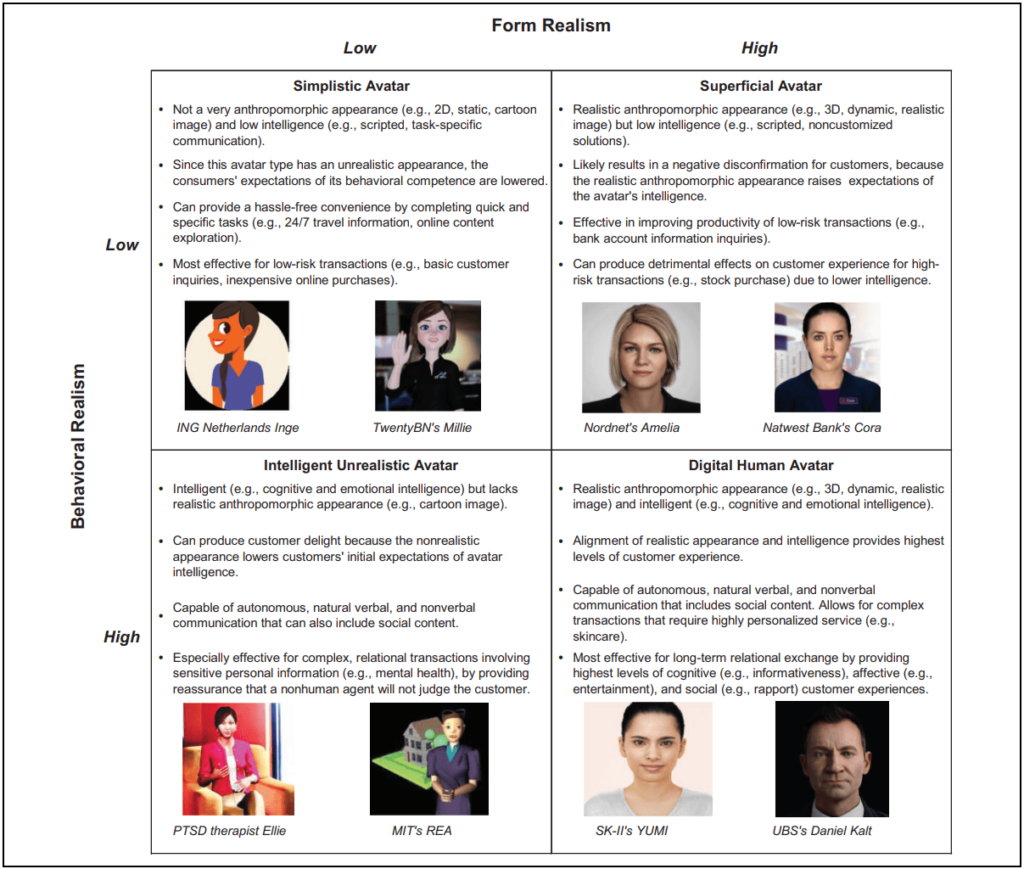Beyond Words: Why People Prefer Conversations with Faces Over Text

Faces are at the core of D-ID. We’ve been both protecting and animating faces using AI for over six years. So, for us, it feels obvious that when it comes to communicating with computers and businesses, people would rather do it in a more natural way via face-to-face conversations as opposed to texting, typing, or dictating.
But is this belief backed up by science? Let’s take a look….
In the real world, we know that face wins over text. For example:
A study conducted at Western University discovered that requests made in person were 34 times more successful compared to those sent via email. The same is true when in comes to social media. When researchers from Georgia Tech looked at 1.1 million photos on Instagram they found that pictures of faces are 38% more likely to get a like and 32% more likely to get a comment than photos without faces.
But does this general effect transfer to digital people? Here are three examples that show the benefit of digital people in specific fields.
1. MARKETING
A study by Laila Zhong of the Department of Media and Communication, Xi’an Jiaotong-Liverpool University analyzed people’s sentiments towards traditional IKEA advertising and that employing IKEA’s virtual ambassador, Imma.

The results were very positive. As the researchers noted:
“The higher the visibility of virtual influencers on social media, the more views, likes, comments and forwards of their endorsed advertisements, and the stronger the… brand engagement.”
The research also found that interactivity can lead to even greater marketing engagement:
“The more interactive the advertisement is, the more it can satisfy the audience’s love and belonging needs, and the stronger the customer brand engagement will be.”
2. HEALTHCARE
The medical field has been a trailblazer in leveraging digital human technology to improve patient relations. In one study titled ‘Response to a Relational Agent by Hospital Patients with Depressive Symptoms’, an animated nurse, Elizabeth, discussed discharge plans with patients.
The study revealed that patients with major depressive symptoms rated the avatar higher on the therapeutic alliance scale. They felt a stronger emotional bond with the agent and expressed an intention to continue working with it.
Remarkably, most preferred receiving discharge details from the avatar over a doctor or nurse. As one participant stated, “Elizabeth seemed just like a nurse, even better, as she explains everything.”
Notably, patients with low health literacy reported a greater therapeutic alliance with the digital agent. Agents like Elizabeth, the researchers noted, “could help reduce disparities in access to care”, particularly for those with depression.

In a similar study from the USC, it was found that U.S. troops would divulge more information to their virtual therapist, Ellie, than they would even on anonymous assessment forms after returning from a tour of duty. This helped researchers and doctors identify more signs of PTSD in veterans.
3. IN THE HOME
One research paper on the Integration of IoT and Cloud Services in a Home Automation Assistant shows that individuals are not only open to digital human presence in their homes but may actually prefer it.
95.2% of users favored interacting with a visual avatar vs only a voice assistant when it came to managing home automation systems (52.4% said definitely, 23.8% answered yes, and 19% were ‘maybes’)
This feedback implies that voice assistants haven’t fully captured their emotional involvement – there’s still a desire for more “human” interaction within the home using digital humans.
So, people do show a preference for face over text and/or voice alone. But what kind of avatar do they prefer?
One meta-analysis conducted for the American Marketing Association might have the answers. It shows that avatars which have both a realistic appearance (a 3D, dynamic, photorealistic image) and are ‘intelligent’ (i.e., have cognitive and emotional intelligence), provide the highest levels of customer experience and are, “most effective for long-term relational exchange by providing highest levels of cognitive (e.g., informativeness), affective (e.g., entertainment), and social (e.g., rapport) customer experiences.”

Fig 2 from An Emerging Theory of Avatar Marketing by Fred Miao, Irina V. Kozlenkova, Haizhong Wang, Tao Xie, and Robert W. Palmatier
Conclusion
In conclusion, the empirical and scientific evidence firmly supports our contention that faces play a crucial role in communication, engagement, and relationship-building. From marketing to healthcare, and even in our homes, digital avatars that exhibit human-like attributes facilitate deeper connections, enhance brand engagement, and improve therapeutic outcomes. This preference for face-to-face interaction isn’t limited to real-world interactions, but extends to digital humans, with avatars that combine realistic appearances with cognitive and emotional intelligence proving to be the most effective.
As technology continues to evolve, the role of digital avatars is set to expand and their influence on our daily lives become increasingly significant. It is not just about humanizing the digital space but about recognizing and harnessing our innate preference for face-to-face interaction. Such understanding elevates the value proposition of digital avatars, underscoring their potential to transform various industries and improve our overall digital experience. Want to test the theory out for yourself? Visit studio.d-id.com to create a digital person today and check out D-ID’s AI Video Generation Platform.
Was this post useful?
Thank you for your feedback!